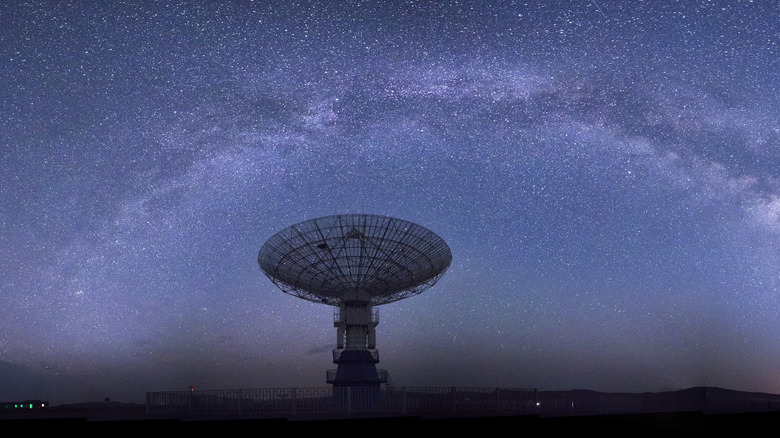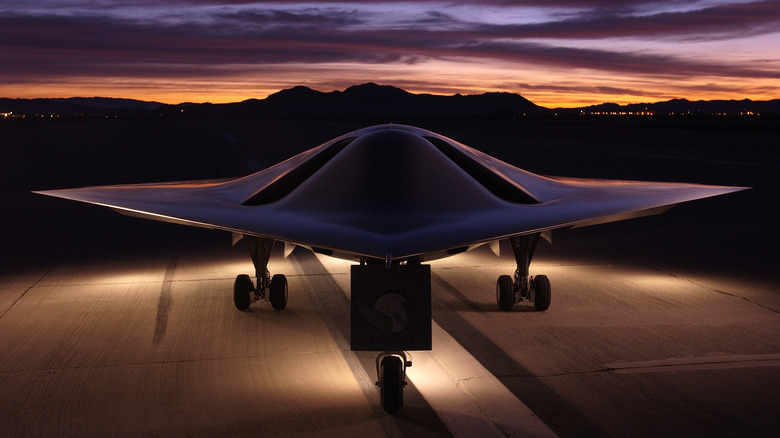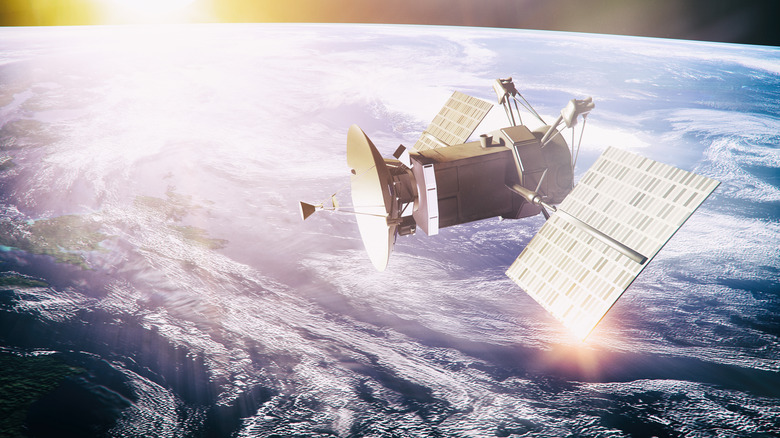A Look At The Technology & Hardware That Make Spy Satellites Work
The United States government and nations all over the globe use a wide variety of reconnaissance tools to stay ahead of their rivals. One such tool the U.S. has historically utilized, especially during the Cold War, was the SR-71 Blackbird spy plane. Flying up to 85,000 feet (roughly two times higher than the average cruising altitude of passenger airplanes) and three times faster than the speed of sound, the Blackbird helped the U.S. avoid enemy fire throughout its tenure. However, even before the Blackbird left active duty in 1989, the United States government used another object to spy on its foes that flew well above 85,000 feet: satellites.
The Cold War really elevated espionage forces in the U.S., and these were critical in monitoring opposing nations to ensure nuclear war didn't break out. A number of national organizations like the CIA and Department of Defense collaborated to create effective spy satellites to track enemy troop movements and arsenal locations. Since then, they have only gotten more stealthy and more technologically advanced.
Of course, details about reconnaissance satellites are kept tightly under wraps as to not spill any secrets. What is known is that they have exceptionally advanced cameras, elaborate communications systems, and other sensors that collect more data than regular images. So, exactly what does a spy satellite encompass? Without a top secret security clearance, most may never know the exact details, but we do know some things.
Spy satellites have high-resolution cameras
Naturally, the most crucial feature of any spy satellite is the powerful camera that can see a zit forming on a person's face from orbit. Okay, that's a bit of an exaggeration. Nations are typically more concerned with seeing details about the locations where troops and weapons are stashed — not so much how a person does their hair.
Satellite resolution is measured in spatial resolution, and the satellites used during the Cold War were capable of snapping photos at about a 40-foot resolution from 100 feet above the ground, meaning each pixel covered a square that measured 40-by-40 feet. As time went on and missions evolved, cameras in satellites became more focused with better resolution. The Gambit satellite, for example, was one of the 10 spy satellites used during the Cold War and had a resolution of 15 feet.
These days, some modern satellites are capable of a resolution of 10 cm, letting observers make out various details on vehicles that cameras from the past couldn't do. For comparison, NASA's Landsat takes pictures that measure the effects of human-induced changes on the planet with a resolution of roughly 50 feet. Of course, modern technology has also rendered the use of film obsolete, and spy satellites now come equipped to handle digital imagery. With the expansion of AI and machine learning technology, those images are only going to get better.
These satellites can relay information in near real-time
Long gone are the days when spy satellites needed to eject their film in canisters for a government official to retrieve. The rate at which data is transmitted nowadays is significantly faster, with some satellites transmitting their data in near real-time. This is all more impressive when one considers that the data is encrypted and compressed — in outer space — before being sent down to whichever intelligence agency is using the satellite.
Most satellites use high-frequency radio waves to transmit information. However, there are a few satellites that instead utilize infrared lasers, which send data at a rate of 100 gigabits per second. That's 100 times faster than the fastest internet speed and 1,000 times faster than any radio frequency other satellites use. In some instances, spy satellites will also communicate with other neighboring satellites rather than data hubs on the surface. This creates an effective network where separate agencies can share information seamlessly as well as increase coverage around the globe.
In general, modern spy satellites have a bevy of sensors that collect different data points or let the camera snap pictures across various spectrums. Some satellites can capture synthetic aperture radar (SAR) and multispectral images. Sometimes a satellite is capable of intercepting and collecting signals intelligence (SIGINT), which is essentially electronic communications used by foreign targets. Certain satellites can accomplish all of the above.
Some models had stealth technology but they were discontinued
It might seem intuitive to design spy satellites with the same kind of radar shielding technology that something like the F-35 fighter jets utilize to keep them off enemy radar. Well, the National Reconnaissance Office (NRO) did make several attempts at stealthy spy satellites in the '80s. The MISTY satellite program was invisible to radar and ran until its last satellite was launched in 1999. Being smaller than other satellites was definitely helpful in remaining covert, but it didn't yield the best results in terms of photographs. Other spy satellites, which were larger, produced better-quality images.
The United States government scrapped the MISTY stealth satellite program in 2007. Although it's unclear why exactly, one can speculate that the its multibillion costs outweighed the benefits. It's not uncommon for spy satellite programs to cost large sums of money, but it's probably extra difficult to efficiently integrate stealth technology and principles on smaller surface areas that also require high-quality imaging technology.
These satellites have the power to control their own orbit
While the location of a reconnaissance satellite can vary, they're typically placed in very specific orbits. However, no matter where they're placed, frequent adjustments are necessary from time to time. They have to maneuver to a more favorable altitude or position to better gather intelligence. And sometimes they need to move in order to avoid colliding with another satellite. The boosters are also useful when a spy satellite reaches the end of its lifespan.
If a spy satellite isn't going to be repurposed for civilian use, most governments will decommission them by positioning them into a "graveyard" orbit rather than retrieve a satellite. There, it will stay until it burns up without the risk of having the object enter the atmosphere and crash into a populated area. Importantly, burning the satellite up this way also prevents opposing nations from learning any secrets a satellite held and who it belonged to. In rare instances, some spy satellites are built with a self-destruct mechanism to prevent it from falling into the wrong hands.




